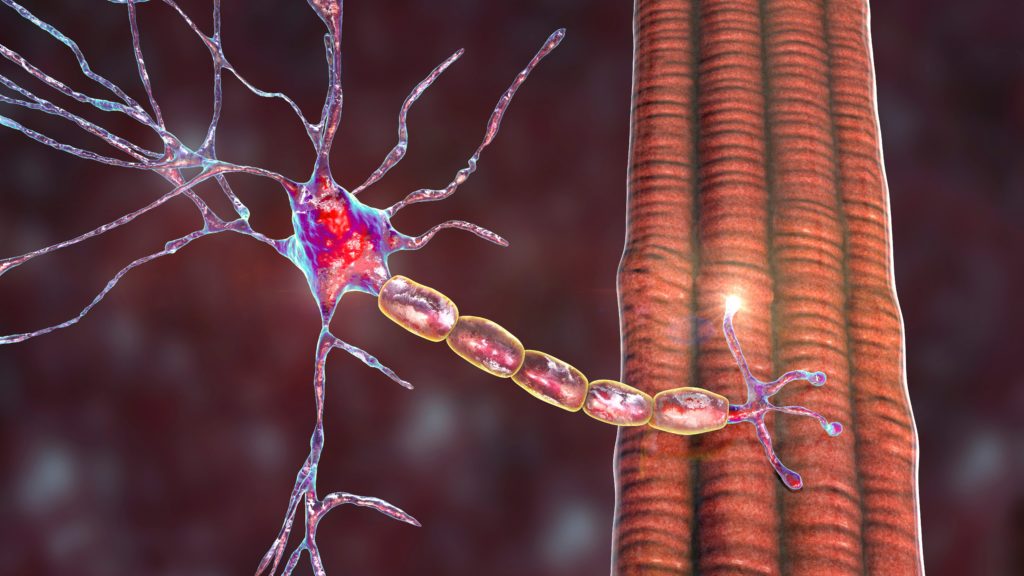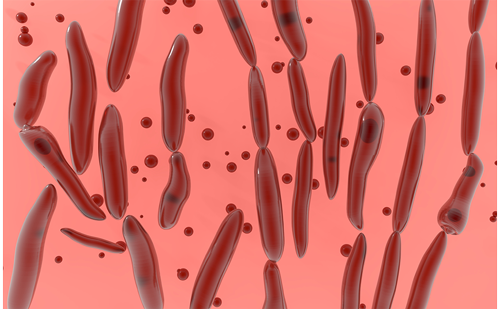Acute inflammatory demyelinating polyneuropathy (AIDP) is an acute monophasic polyradiculoneuritis whose incidence ranges from 0.89 to 1.89 cases (median, 1.11) per 100,000 person-years in Western countries.1,2 Chronic inflammatory demyelinating polyneuropathy (CIDP) is a common, albeit underdiagnosed and potentially treatable, disease having an estimated prevalence of 1.2–2.3 per 100,000.3 Although CIDP symptoms do not usually reach their most severe until at least 2 months from disease onset,4–6 about 16 % of patients may have subacute onset and a monophasic course.6–8
In view of the therapeutic options, intravenous immunoglobulin (IVIg) and steroids exert short-term clinical improvement in approximately 60 % of CIDP cases, whereas steroids have no effect on AIDP patients.9–12 Although plasmapheresis is an attractive therapy option for non-responders to IVIg, it is not always easy to perform, is often related to complications (because of thrombosis of venous catheter, sepsis, etc.) and is not ubiquitously available.13 Thus the precise aetiological classification of subacute polyradiculoneuropathies significantly affects the early application of steroids in CIDP. This review aims to give a timely update on the application of clinical, electrophysiological and nerve ultrasound parameters in distinguishing subacute CIDP from AIDP.
Methods
The authors searched PubMed for articles published in English up to December 2014. Search terms included ‘nerve ultrasound and acuteonset CIDP’, ‘nerve ultrasound and AIDP’, ‘electrophysiology and acute-onset CIDP’, ‘electrophysiology and AIDP’, ‘clinical parameters nd acute-onset CIDP’ and ‘clinical parameters and AIDP’. The authors reviewed and prioritised full articles by relevant content.
Clinical Parameters
The clinical evaluation of patients who have symptoms or signs of polyradiculoneuropathy requires the documentation of (1) the presence of sensory symptoms or signs, defined as numbness beyond the ankles or wrists and/or impaired pinprick sensation in a stocking-glove distribution and/or vibration sense impairment at the toes and metatarsophalangeal joints and fingers using the impairment score14 and/or sensory ataxia; (2) the presence of bulbar palsy, defined as dysarthria, dysphagia and tongue or soft palate weakness; (3) the presence of autonomic nervous system (ANS) dysfunction, defined as hyper- or hypotension (in the absence of known essential hypertension), tachy- or bradyarrhythmia, sinus tachy- or bradycardia or urinary retention; (4) the preceding respiratory or gastrointestinal infections; and (5) the presence of respiratory muscle weakness or need for mechanical ventilation.
For the diagnosis of AIDP, usually the diagnostic criteria published by Asbury et al. are used15 (see Table 1). According to these criteria, a demonstration of weakness, ranging from complete paralysis of all extremities to mild weakness of legs, bulbar and facial muscles, as well as areflexia or hyporeflexia, is required. In addition, time from onset to plateau of symptoms must be shorter than 4 weeks, and the diagnosis must be confirmed at follow-up. The AIDP patients should have no relapse (only single treatment-related fluctuations permitted), no need for maintenance therapy and no progression beyond 8 weeks. On the other hand, subacute CIDP can be diagnosed when patients present acutely within 4 weeks of onset of symptoms but continue to deteriorate beyond 8 weeks, relapse three times or more after initial improvement or resolution of symptoms or require maintenance therapy with more than one additional course of plasma exchange, IVIg and/or immunosuppressive medication.16,17
In view of recent literature reports, it seems that only the presence of sensory symptoms or signs and the absence of bulbar palsy or respiratory muscle weakness/need for mechanical ventilation are the only clinical parameters that are significantly more frequent in acuteonset CIDP than in AIDP patients.16–18 ANS dysfunction or the presence of preceding infections seem not to differ statistically among the acute-onset CIDP and the AIDP patients.16,17 On the other hand, the median time to reach nadir during first exacerbation seems to be significantly longer in the acute-onset CIDP group than in the AIDP group.16 In contrast to patients having acute-onset CIDP, none of the patients having AIDP, or even treatment-related fluctuations, seemed to deteriorate after 8 weeks.16 In addition, at least half the patients having acute-onset CIDP seem to be able to walk independently at nadir of the different deteriorations compared with AIDP patients.16
Accordingly, the early onset of prominent sensory symptoms or signs, the absence of bulbar palsy or need for mechanical ventilation, a prolonged time to reach nadir and the maintenance of ability to walk independently should always raise the suspicion of acute-onset CIDP so that follow-up and maintenance treatment should be considered.
Electrophysiological Parameters
During electrophysiological evaluation of patients having symptoms or signs of acute polyradiculoneuropathy, the examination protocol proposed from the Joint Task Force of the European Federation of Neurological Societies and the Peripheral Nerve Society should be used12,15 (see Table 1). According to these criteria, for a definite CIDP, the clinical criterion and at least one of the electrodiagnostic criteria should be fulfilled,12 whereas for a definite AIDP, both clinical criteria and three out of four electrophysiological criteria should be fulfilled.15
On the other hand, the detection of A-waves during F-response studies, the presence of sural sparing pattern and the calculation of the sensory ratio may be additionally used for this purpose. The presence of A-waves in F-response studies is defined in the literature as a response with a constant latency, amplitude and morphology between that of the compound muscle action potential (cMAP) and the F-wave, or following the F-wave.20 Concerning the sural sparing pattern, four different definitions exist in the literature: (1) normal sural sensory nerve action potential (sNAP) amplitude with abnormal median sNAP amplitude (low or absent),21 (2) normal sural sNAP amplitude with absent median sNAP,22 (3) normal sural sNAP amplitude with abnormal median or ulnar SNAP amplitude (low or absent)23 and (4) normal sural sNAP amplitude with at least two abnormal (low or absent) sNAPs in the upper extremities (radial, ulnar or median nerves).24 The sensory ratio can be calculated as (sural + radial) ÷ (ulnar + median) sNAP amplitudes.25
According to literature reports, the later electrophysiological parameters do not seem to be statistically different between the acute-onset CIDP and the AIDP patients.16–18 Although the sural-sparing pattern or the elevated sensory ratio might be useful to differentiate an acquired demyelinating polyneuropathy from a length-dependent axonal polyneuropathy, recent studies show that these patterns occur equally in both AIDP and CIDP.16,23–25 On the other hand, the A-wave is attributed to either sprouting phenomena or ephaptic/ectopic discharges. In the case of CIDP, it could be a sign of functional recovery, whereas in AIDP, it could be an early indicator of demyelination.26 The later findings show that despite the use of motor conduction studies at the early phase of a polyradiculoneuropathy as a useful prognostic marker of functional outcome,27 early sensory studies may not be helpful in distinguishing these two immune-mediated polyradiculoneuropathies.16,17
Recently, nerve excitability tests have been introduced in the literature as a possible diagnostic biomarker of CIDP. In the nerve excitability test, threshold tracking is used to measure peripheral nerve function. This technique provides the clinician additional information about axonal ion channel function and the resting membrane potential in a clinical setting.28 The nerve excitability test has previously been used to study both AIDP and CIDP patients, identifying a pattern of abnormalities characteristic of CIDP.29–31 In contrast to CIDP, nerve excitability test findings in patients with AIDP have tended to be less well defined.32 A recent study has investigated whether changes in membrane excitability were evident between patients having AIDP and acuteonset CIDP to enable these conditions to be differentiated at an early stage.28 Common findings in AIDP are abnormalities in the recovery cycle of excitability, including significantly reduced superexcitability and prolonged relative refractory period, without changes in threshold electrotonus. On the other hand, in patients having acute-onset CIDP, a different pattern occurs, with the recovery cycle shifted downward (increased superexcitability; decreased subexcitability) and increased threshold change in threshold electrotonus in both hyperpolarising and depolarising directions (depolarising threshold electrotonus [90–100 ms], hyperpolarising threshold electrotonus [10–20 ms], hyperpolarising threshold electrotonus [90–100 ms]), suggesting early hyperpolarisation.28 The above findings indicate that the nerve excitability test parameters, superexcitability and threshold electrotonus, may be potentially useful indices for distinguishing between patients having AIDP and having acute-onset CIDP.
Nerve Ultrasound Parameters
Normal peripheral nerves have a tubular form, with alternating hypoechogenic and hyperechogenic zones, corresponding to nerve fibres and perineurium, giving the impression of a ‘honeycomb’ pattern when scanning transversely. The ultrasound examination of a peripheral nerve mainly focuses on the assessment of its cross-sectional area (CSA) at certain sites of clinical interest and the variability of the CSA along its anatomical course (intranerve CSA variability). The CSA can be measured on transverse images, whereas the transducer is kept perpendicular to the nerve, applying minimal pressure. Variability within a measurement can be reduced by using an average of multiple measures (at least three). Measuring just inside the echogenic rim of the nerve is the preferred technique. CSA reference values for peripheral nerves and brachial plexus have been reported in various studies in the literature.33–36
Several reports exist in the literature on brachial plexus or peripheral nerve hypertrophy in CIDP patients.37–42 In addition, two studies reported increased values of the intranerve CSA variability in several peripheral nerves, highlighting the focal pattern of CSA enlargement occurring in CIDP.41,42 Although these findings are promising for the imaging of the structural affection of the nerves, they add little, if any, in the differentiation of subacute CIDP from AIDP.
The use of a new nerve ultrasound score to distinguish acute-onset CIDP from AIDP has been recently introduced in the literature.43 The idea behind the development of the concrete ultrasound score was based on the statistical comparison of the distribution pattern of pathological ultrasound findings between these two polyradiculoneuropathies.42,44 The newly established ‘Bochum Ultrasound Score’ (BUS) includes the measurement of the cross-sectional area of (a) the ulnar nerve in Guyon’s canal, (b) the ulnar nerve in upper arm, (c) the radial nerve in spiral groove and (d) the sural nerve between the lateral and medial head of the gastrocnemius muscle (see Figure 1). The new scoring system includes two rules: (1) the patient receives 1 point for each of the aforementioned anatomic sites where he or she shows pathological cross-sectional area enlargement compared with the reference values,43 and (2) if the patient shows a pathological crosssectional area nerve enlargement of the concrete nerve on both sides of the body, he or she also receives only 1 point. Considering the above, each patient can receive a minimum sum score of 0 points and a maximum sum score of 4 points (see Table 2).
A sum score of ≥2 points in BUS seems to allow with a sensitivity of 80 % and specificity of 100 % the distinction of acute-onset CIDP from AIDP.43 According to preliminary results, the later score is more sensitive than classic electrophysiological (sural sparing pattern, sensory ratio) or clinical parameters (sensory symptoms or signs, autonomic nerve dysfunction, need for mechanical ventilation) in diagnosing acute-onset CIDP.18 Although the time course of ultrasound findings both in AIDP and acute-onset CIDP remains unknown, the greater extent of pathological ultrasound changes noted in the acuteonset CIDP group may indicate that CIDP causes structural changes prior to the patient-reported onset of symptoms.
Among the advantages of BUS are (a) easy administration, for it summarises four anatomical sites that can be easily sonographically examined; (b) economy of time, for it can be performed quickly (about 10 minutes); (c) high sensitivity, specificity, positive and negative predictive value and (d) lack of side effects or pain for patients while performing nerve ultrasound.18
Conclusion
This review shows that both nerve excitability tests and nerve ultrasound may be useful additions to clinical evaluation – especially in patients in whom history taking may be difficult or imprecise – thus raising the diagnostic sensitivity and specificity for distinguishing acuteonset CIDP from AIDP. Multicentre prospective studies are needed to confirm the later preliminary results.













